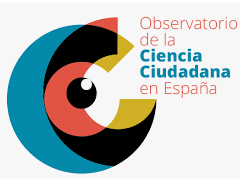ICM-CSIC: MINKA Citizen Observatory
-
Code
ICM-CSIC -
Registration date
13-11-2024 - Download the sheet
Description
MINKA Citizen Observatory is a community-based platform dedicated to environmental and biodiversity data collection, hosting one of the most important databases of Mediterranean marine species with special focus on the Catalan coast. Through its mobile app and website, citizens contribute geolocalized images, sounds and observations of both marine and terrestrial biodiversity. This platform enables users to collaboratively validate observations, including expert taxonomic identification. Once data meets quality criteria, it achieves "research grade" status and is shared with global infrastructures like the Global Biodiversity Information Facility (GBIF). Recognized as a UN Acceleration Action for SDGs, MINKA contributes significantly to SDGs 11, 14, 15, and 17 by working with diverse stakeholders.
Overall information
Goals
MINKA's database aims to make environmental data open and reusable, contributing to Sustainable Development Goals -SDGs- monitoring through locally-grounded observations. The volume and frequency of data collection achieved here is only possible through public participation, making citizen-generated data a powerful tool for understanding environmental changes.
Strengths
MINKA's primary strength lies in its distributed citizen science data acquisition system, where hundreds of contributors generate real-time biodiversity and environmental monitoring data. This continuous data stream creates a dynamic repository of biodiversity observations. MINKA implements a collaborative validation protocol that integrates empirical knowledge from field observers with taxonomic expertise from trained scientists. This synthesis of experiential and academic expertise enhances taxonomic resolution and data reliability. Through this collective intelligence framework, MINKA ensures standardized, quality-controlled data outputs. While MINKA operates as a distributed observation network across Europe and beyond, its most significant data aggregation occurs in Catalonia. The regional community has established MINKA as the principal database of Mediterranean marine species occurrences, demonstrating how localized citizen science efforts can generate significant scientific datasets.
Taxonomic coverage
Scientific names
La base de datos de MINKA contiene una amplia gama taxonómica de biodiversidad marina y terrestre, abarcando 27 filos y 54 clases. El alcance taxonómico va desde organismos microscópicos hasta grandes vertebrados, incluyendo invertebrados marinos (Mollusca, Echinodermata, Cnidaria, Arthropoda), vertebrados marinos (Actinopterygii, Elasmobranchii), plantas y algas marinas (Chlorophyta, Rhodophyta, Ochrophyta), y organismos microscópicos (Bacillariophyta, Ciliophora). La base de datos también incluye biodiversidad terrestre, como plantas vasculares (Magnoliophyta, Pinophyta), vertebrados (Aves, Mammalia, Amphibia, Reptilia), artrópodos (Insecta, Arachnida) y hongos (Ascomycota, Basidiomycota). Con un enfoque particular en especies marinas mediterráneas, MINKA alberga registros detallados de invertebrados bentónicos, comunidades de peces costeros, algas marinas, fanerógamas marinas y aves costeras. Esta extensa cobertura taxonómica refleja la diversa experiencia de nuestra comunidad y su capacidad para generar datos en múltiples grupos taxonómicos.
Geographic description
MINKA dispone de observaciones de una diversa gama de regiones geográficas a nivel mundial. Si bien el conjunto de datos se encuentra en continua expansión
Temporal location
Collection period
23/06/1983 12/11/2024

